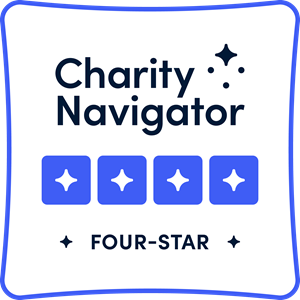Congregation Kol Shofar Meet-Up in Israel
Successful Pilot for Synagogue/Federation Partnerships for Israel
If you want to know Israel, you must go to the land of Israel. If you want to know Israelis, you have to meet and be with them there in their land doing what Israelis do. If you want to better understand Judaism, then you must go to Israel, connect with the people and see, hear, experience their relationship to the land, now and throughout history.
Our Israel Meet-Up this spring, from May 12-19, was a grand experiment. I chaired Congregation Kol Shofar Bridges to Israel Committee for the past six years and, as part of that effort, we endeavored to engage our congregants and wider community with Israel using a unique approach. We undertook an innovative experiment as a pilot to determine whether we could have ongoing trips to Israel that would meet the needs of a different segment of the Jewish community and to augment traditional Missions.
To supplement our itinerary of hiking and historical site visits, trauma treatment NGO Centers, and cultural/eco-agriculture sites, we requested that the Federation arrange meetings with recipient agencies in Israel so we could understand how our community is actively contributing to a more inclusive and pluralistic society in Israel.
The Federation site visits were an excellent addition. People first resisted them in concept, but those who attended loved them for the opportunity to get insight into Israeli society from many perspectives and to actively engage in conversation with the presenters. There is much more we can do with the Federation as partners in future Congregation Kol Shofar Israel trips. We encourage other synagogues to also consider planning a joint synagogue/Federation trip for their members and wider community.
Supported by excellent, enthusiastic Israel-based Federation staff members, Barak Loozon and Merav Grindlinger, we made several site visits that greatly enriched our experience with Israeli Jews, Druze and Jerusalem Arabs, who are each working to bring disparate populations together and improve the quality of life and socio-economic opportunity for those who are on the periphery of Israeli society.
Of the several groups and many individuals we met, three organizations funded by the Federation stand out as examples with inspirational individuals and initiatives: Beit Safafa High School in East Jerusalem, New Spirit in Jerusalem, and Neurim Community Development in various Druze villages.
Beit Safafa

explain how Beit Safafa High School in
East Jerusalem prepares students for
entry into Israeli Universities
Aiman Gabara, principal for 17 years of Beit Safafa High School, grades 7-12, is a big man with a big heart and ambitions for his students. He engaged with us to help understand his challenges in a very difficult environment. Jerusalem Arabs have no country, as they are neither Israeli nor Palestinian West Bank citizens (Israel annexed East Jerusalem, but few of the residents have Israeli citizenship). Aiman spoke movingly of his own experiences not being considered Israeli (deferred for professional promotions, strip-searched exiting Israel on vacation), while being considered Israeli by Egyptians who see his Israeli passport. He believes being an East Jerusalem Arab has limited his own career opportunities, but he wants better chances for his students.
Beit Safafa is the only school in East Jerusalem that offers a dual curriculum track: Israeli and Palestinian. Students choose which track they will follow and will prepare for qualifying examinations for universities based on the curriculum they choose. Very few have been accepted to Israeli universities because the qualifying exams are in either English or Hebrew with problem-solving rather than rote learning as the grading basis. The Federation supports Beit Safafa in helping to fund the additional tutoring necessary to help the students qualify for entrance to Israeli universities.
New Spirit (Rouach Hadasha)
Jerusalem has a big demographic time-bomb problem. Many young professionals leave the city for Tel Aviv and other coastal communities that offer more sophisticated and lively experiences with like-minded people. Result: the two most impoverished and isolated communities – Haredim and Arabs – are the fastest growing segments of Jerusalem’s residents. They are mostly underemployed or unemployed and have large families that receive public support. Surprisingly, Jerusalem is one of the poorest cities in Israel. Go beyond the tourist areas and you will see some of the most crowded and underdeveloped urban areas in Israel.
Young artist professionals created New Spirit as a catalyst to reverse the trend. Using street theater, environmental art, festivals, puppet shows, and many other ways the arts can enliven a city, New Spirit is making a difference in helping to reverse Jerusalem’s demographic losses of young people.
Importantly, the Mayor of Jerusalem, Nir Birkat, has embraced the New Spirit concept and included it in the five-year plan for Jerusalem. This means that Federation seed funding has enabled New Spirit to be incorporated and scaled into the government plan for Jerusalem. This is a great metric of success for the Federation to achieve: the seeding of initiatives that are adopted as part of public/NGO partnerships. The enthusiasm and idealism of the young women we met inspired us to see Israeli idealism for community development so beautifully come to fruition.
Neurim
The Druze play a unique role in Israel and have been loyal Israelis since the founding of the state. Druze serve in all branches of the Israeli military and have been distinguished in combat, boasting a high level officers in the IDF as well as security police forces. However, they have not attained equal access and success in Israeli society. Their villages have been isolated, both geographically and through a traditional culture tightly tied to their communities. Where they have been in mixed communities with Israeli Arabs there has been conflict. Druze are loyal to the country they reside in (Lebanese Druze serve in the Lebanese army and Syrian Druze serve in the Syrian Army), while Israeli Arabs have been ambivalent or hostile to serving the State of Israel. So the Druze are sometimes viewed as traitors by the Israeli Arabs, while simultaneously lacking the resources or opportunities enjoyed by many Jews with whom they serve.
Neurim is a program that the Federation helped to seed fund that now operates in 14 Druze Villages throughout Israel. The program hires Druze social workers and community organizers to help acculturate young Druze to self-awareness and artistic expression, enabling them to more fully be integrated into Israeli society.
We met with two amazing young adults who work for Neurim, Rana Ghanem Zeeneldeen, manager of the western region, and Motkal Halabi, manager of the Neurim Center in Daliat-al-Karmel. They oriented us to the program as they accompanied us though Daliat-al-Karmel and its Community Center. They took us into the rooms where young girls and boys were engaged in cultural and artistic activities supervised by caring adults tending to their talents and imaginations.
Rana and Motkal shared stories of being in the hi-tech corporate sector and being recruited to serve the Druze Community in Neurim. Rana is an engaging young woman who was recruited five years ago to help build the Neurim program. As inspiring for her dedication as she is articulate about her program and objectives, Rana is a great example of the successful integration of non-Jewish Israelis into the society.
Motkal is a pilot in the Israeli Airforce and spoke movingly about his transition to serve his people. Tall, handsome, with a winning smile, Motkal could be one of my sons (I have two grown thirty-somethings), and he clearly sets a model for the young people in his center to aspire to.
Neurim is another program that has been adopted by the Israeli government for public/NGO partnership. Through this effort, the Federation is playing a key role to seed and pilot to success programs that Israel can then fund and scale.

Our visits to Federation-funded sites were a great addition to our Meet Up and we look forward to more collaboration between our synagogue, Congregation Kol Shofar, and the Federation to bring the Bay Area community closer to Israel through meaningful and transformative journeys.
Read more from j. Weekly and the Meet-Up website.
Jeff Saperstein chairs the Congregation Kol Shofar Bridges to Israel committee and has been a long-time volunteer in the Jewish community. He was a former Federation Marketing Communications Director (1983-85) and a co-founder of CVC Group, a Marketing/Training company.


